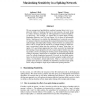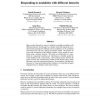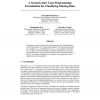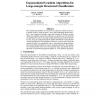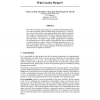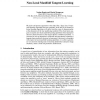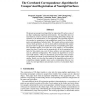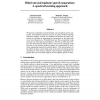NIPS
2004
14 years 29 days ago
2004
We use unsupervised probabilistic machine learning ideas to try to explain the kinds of learning observed in real neurons, the goal being to connect abstract principles of self-or...
NIPS
2004
14 years 29 days ago
2004
Motor control depends on sensory feedback in multiple modalities with different latencies. In this paper we consider within the framework of reinforcement learning how different s...
NIPS
2004
14 years 29 days ago
2004
We propose a convex optimization based strategy to deal with uncertainty in the observations of a classification problem. We assume that instead of a sample (xi, yi) a distributio...
NIPS
2004
14 years 29 days ago
2004
We consider the problem of structured classification, where the task is to predict a label y from an input x, and y has meaningful internal structure. Our framework includes super...
NIPS
2004
14 years 29 days ago
2004
We claim and present arguments to the effect that a large class of manifold learning algorithms that are essentially local and can be framed as kernel learning algorithms will suf...
NIPS
2004
14 years 29 days ago
2004
Spike sorting involves clustering spike trains recorded by a microelectrode according to the source neuron. It is a complicated problem, which requires a lot of human labor, partl...
NIPS
2004
14 years 29 days ago
2004
We present an unsupervised algorithm for registering 3D surface scans of an object undergoing significant deformations. Our algorithm does not need markers, nor does it assume pri...
NIPS
2004
14 years 29 days ago
2004
The problem of learning a sparse conic combination of kernel functions or kernel matrices for classification or regression can be achieved via the regularization by a block 1-norm...
NIPS
2004
14 years 29 days ago
2004
We present an algorithm to perform blind, one-microphone speech separation. Our algorithm separates mixtures of speech without modeling individual speakers. Instead, we formulate ...
